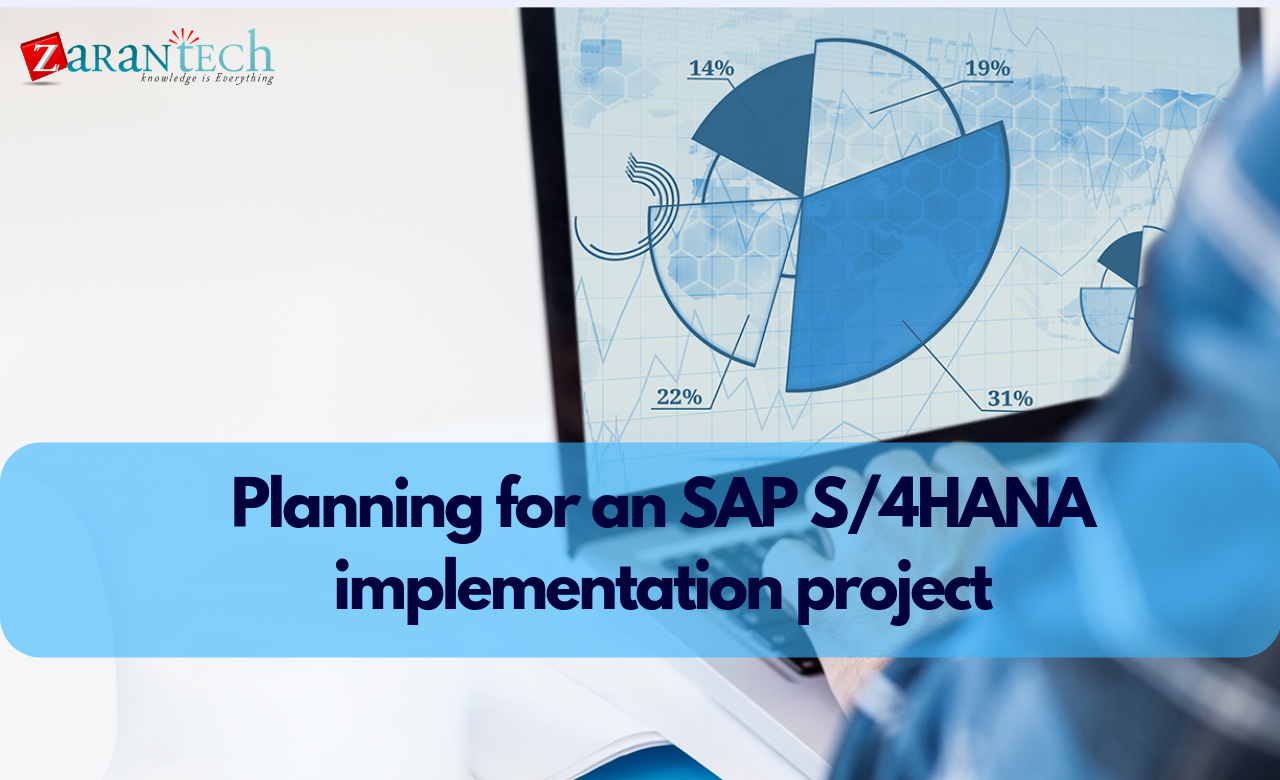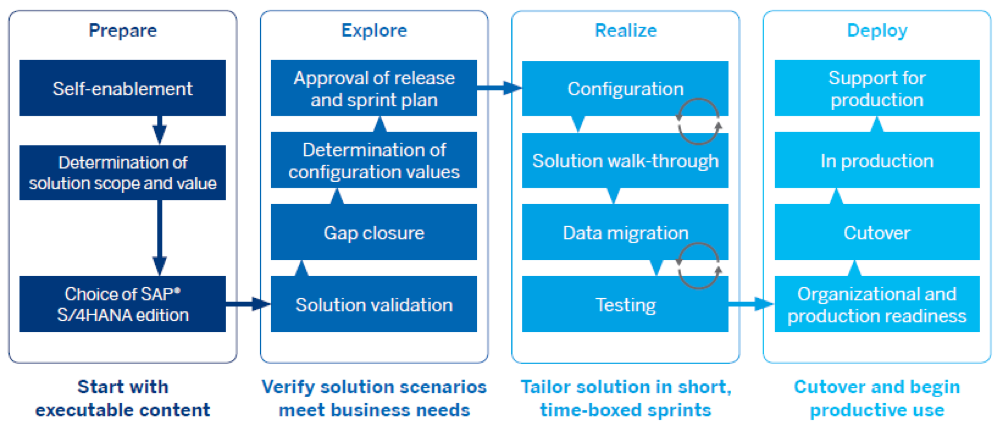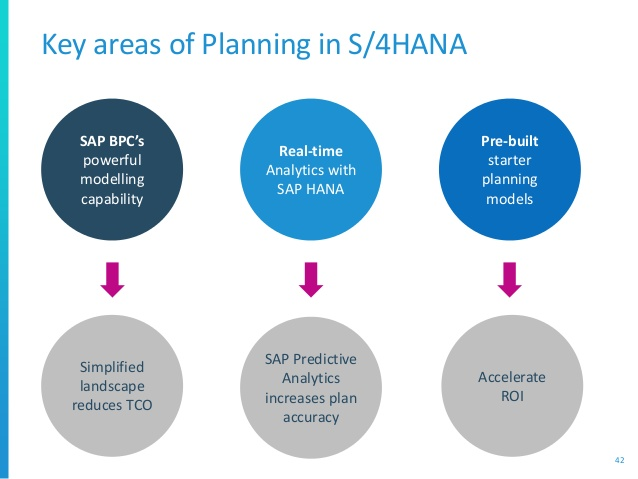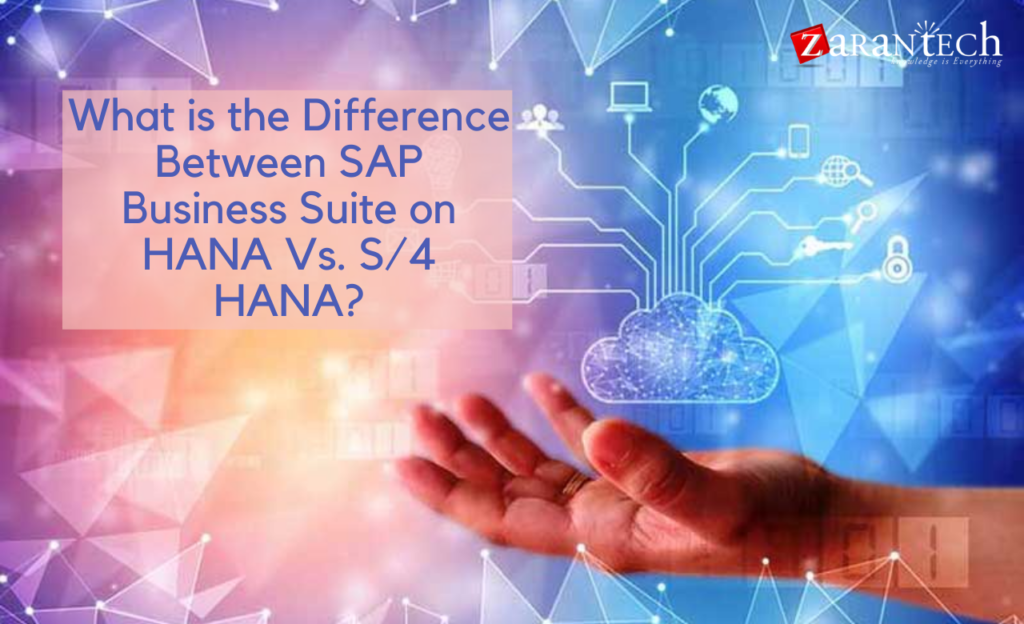Planning for an SAP S/4HANA implementation project
Category: SAP S/4HANA Posted:Apr 24, 2019 By: Robert
The SAP S/4HANA implementation project is considerable undertakings with significantly higher stakes. Since such an effort brings in massive business benefits, there are proportionate risks to be monitored and mitigated. Implementations such as these face the challenge of running high expenses all around. When there is a lack of planning and structure, challenges such as these will be higher. Each passing day will bring a higher number of expenses in the form of consultants working on the SAP system integrator. To have a successful implementation a team should investigate the steps given below:

Source: www.tachyontech.com
Developing a realistic view of time and cost: The first step in any implementation is checking unrealistic estimates and expectations of the task at hand. When expectations are not in line with the objectives at hand, poor decision making will be the ultimate outcome. A case in point would be organizational change management which needs to be dealt with right from the start.
Learn SAP S/4HANA from Our Industry Experts
Most SAP experts believe in benchmark metrics to bring about baseline standards in implementation. Most SAP implementations on the whole cost around 5X the investment done in software with the nominal SAP implementation cost amounting up to be 4X the company’s yearly revenue.

Source: image.slidesharecdn.com
Defining a phasing strategy that aligns with Enterprise culture: There are a few enterprises that push for rapid change which ends up affecting the intended transformation by being sub-standard and incomplete in nature. To judge the relevance and timeliness of an implementation one needs to factor in all in-house resources available, the amount of pressure that needs to be applied on team members to get the task done and risk tolerance that is possible. Only then can such an implementation be successful.
The strategy one uses to phase in a transformation should perfectly align with the current or pre-existing work culture. Such alignment of strategy is downright critical and core to the success of the entire implementation.
Gauge Process Change Accurately: S/4HANA might very well transform your business beyond your expectations. But one must keep in mind the amount of change an organization will be able to handle at a given time. You will need to consider in detail how much practical change is possible in the enterprise without disrupting the organizational revenues and critical processes. The vision here must be aligned with the organizational vision and mission. And any change that must be brought about should be based on a global change management strategy. After this has been addressed in detail you can then move on the execution and management of change while keeping in mind overall alignment.
Development of internal and external resource plans: One of the bigger challenges in SAP S/4HANA implementation is obtaining and managing an adequate number of internal resources to ensure implementation success. Most enterprises, apart from a few exceptions work with well-defined resource constraints. In this case, the task of extricating operational resources from daily or regular operations will be a massive challenge and risk.
You can achieve said steps by:
- Defining clear-cut roles between the organization, third parties and the SAP system integrator
- Identify the resources available currently and resources that are required – resource gaps.
- Recognizing the delegation of tasks, separation of tasks based on internal and external resources and outsourcing required.
- Hiring the above-mentioned resources
- Incorporating project strategy and project plan as needed
Resource management is a critical aspect of project management and should be investigated with adequate care. This will help check budgetary overruns ensuring the success of the implementation.
Development of an organizational change management plan
The change strategy should include, but not be limited to:
- Organizational readiness
- Organizational design
- Executive and stakeholder alignment
- Communications
- Benefits realization
- Training
- Cultural transformation
- Workforce transition
Defining the IT transition strategy
The SAP S/4HANA implementation is clearly a business initiative and not actually driven by IT. But the IT section of the enterprise will no doubt be affected by the SAP implementation. This means this will be a need for fresh skill sets, new IT architectures, and sub-architectures. This will further require training to back the initiative in the years to come to ensure success of the implementation. An IT transition plan for an SAP implementation initiative should include, but not be limited to:
- System architecture and integration points
- Project and post-go-live support processes
- Longer-term Center of Excellence strategies
- Application decommissioning plan
- Reporting roles and responsibilities
- Skills migration and training
It is important to note that it is the IT department in an enterprise that will support the SAP implementation initiative even after the original SAP consultants have disbanded and the project team members have been reallocated to other operations within the enterprise.
SAP S/4HANA sustainability within the Enterprise: The transformation to SAP S/4HANA is not sprint, but a marathon of sorts. It is an ongoing effort without a definitive end date. Therefore, all the stakeholders involved will have to plan accordingly. This can be addressed under the project quality assurance department in the enterprise. The implementation initiative that we have addressed in the sections above will have to be supported with sustainability efforts. This can be done by establishing a Center of Excellence strategy, including all the factors that are mentioned below:
- SAP S/4HANA knowledge transfer between the system integrator and enterprise internal project resources
- Well detailed support plan for the upcoming years
- Enhanced integration amongst business operations and IT employees in an enterprise
- Clearly structured transition plan for the IT department in an enterprise
- Well defined upgrade strategy and plan in the future
Most enterprises which get into SAP transformation are into it for the long run. This means relying on the aspects of the organization that are sustainable in terms of corporate vision and business objectives.
Register Today to Learn SAP S/4HANA & Get Certified
Conclusion: SAP S/4HANA implementations are not mere trifles that can be executed in isolation within an enterprise. It is a long-term sustainable effort that will completely change the way a business functions and ensures that the enterprise will not get derailed with less important objectives. This means that to attain the required business benefits you will have to structure, plan, execute and repeat the whole cycle until the enterprise gets it right.





 99999999 (Toll Free)
99999999 (Toll Free)  +91 9999999
+91 9999999